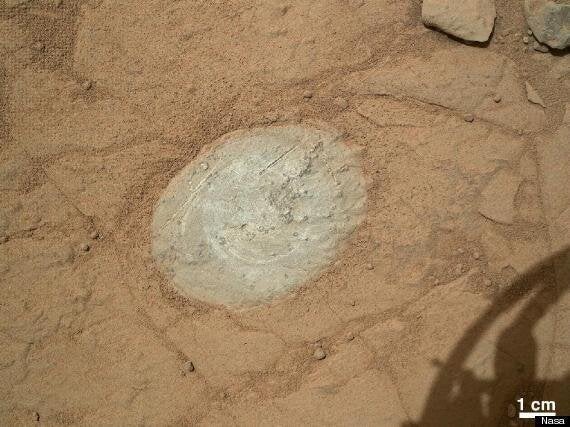The Mars rover Curiosity has used tools designed to remove dust from rocks for the first time - and has made a fairly odd discovery.
Mars isn't red.
Well, okay, not quite.
But it has shown that after removing a top layer of dust and dirt, the rocks on Mars' surface are far more pale and grey than we - if not scientists - are used to seeing.

Mars is covered in a layer of "rust" - iron oxide, to be exact - which reflects the red part of the spectrum in normal light. It is thought the iron oxide might have come from volcanoes which once littered its surface.
When you wipe away the rust, you have something far more prosaic - greyish rock.
The Dust Removal Tool is a motorised wire-bristle brush, which can target individual rocks and clean them before its other tools, including its hammering drill, can remove samples.
The target this time was Ekwir_1, a rock in the Yellowknife Bay area of Mars' Gale Crater.
The tool clearly works, and removed a thick layer of dust from the rock revealing the white surface underneath.
"We wanted to be sure we had an optimal target for the first use," said Diana Trujillo of Nasa's Jet Propulsion Laboratory.
"We need to place the instrument within less than half an inch of the target without putting the hardware at risk. We needed a flat target, one that wasn't rough, one that was covered with dust. The results certainly look good."
The rover itself celebrated in typical style:
The $2.5 billion rover is currently five months into a planned two year mission to see if the (formerly) Red Planet was once capable of supporting life.